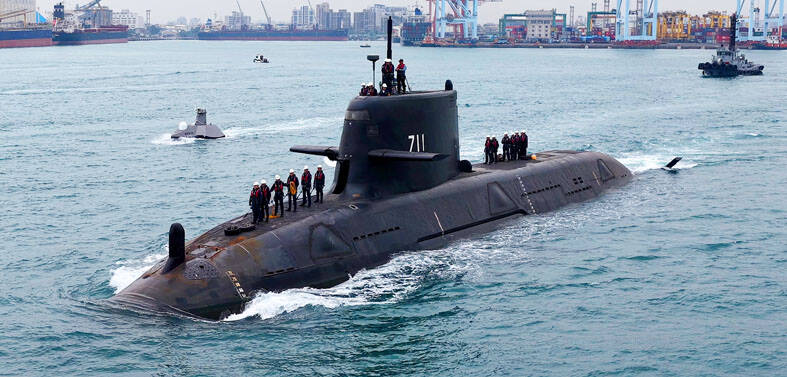A government Web site that aims to encourage the public to contribute ideas on how to boost the nation’s economy has drawn praise and criticism alike from the public and lawmakers.
The Central Personnel Administration (CPA) launched the Web site to solicit creative economic policy proposals on Sept. 12.
The Web site had attracted at least 100 proposals as of Wednesday and many of them were so “creative” that the CPA decided to remove them, a report in the Apple Daily said yesterday.
FLOATING SALARIES
Ideas posted on the Web site reportedly suggested that Cabinet ministers should work as volunteers or that there should be a floating salary pricing system for ministers, much like the nation’s floating oil pricing system. Some others called for the Chinese Nationalist Party (KMT) to share its party assets with the public as a way to boost the nation’s economy.
As of yesterday, none of the messages on the CPA Web site could be viewed.
CPA Minister Cheng Ching-hsiu (陳清秀) explained yesterday that the site had originally been intended to target civil servants and that the CPA’s opening of the site to the public was in line with a pledge made by President Ma Ying-jeou (馬英九) and Premier Liu Chao-shiuan (劉兆玄) to “listen to the voices of the people.”
Chen stressed that the government was looking at numerous ways of boosting the economy, saying “the more ideas, the better.”
PLAYING GAMES
Democratic Progressive Party (DPP) Legislator Ker Chien-ming (柯建銘) accused the CPA of acting as if it were playing games.
The launch of the Web site, he said, showed that Ma and Liu had run out of ideas on how to revive the economy.
KMT Legislator Nancy Chao (趙麗雲) also frowned upon the Web site, saying that “the Cabinet should propose its own economic policies rather than rely on creative ideas from the public.”
KMT Legislator Ting Shou-chung (丁守中), however, argued that many large companies also use the Internet to seek ideas when formulating business strategies.
Describing the Internet as “far-reaching,” Ting said the Web site could attract a lot of ideas and allow the public to brainstorm together.
ADDITIONAL REPORTING BY FLORA WANG AND STAFF WRITER

NUMBERS IMBALANCE: More than 4 million Taiwanese have visited China this year, while only about half a million Chinese have visited here Beijing has yet to respond to Taiwan’s requests for negotiation over matters related to the recovery of cross-strait tourism, the Tourism Administration said yesterday. Taiwan’s tourism authority issued the statement after Chinese-language daily the China Times reported yesterday that the government’s policy of banning group tours to China does not stop Taiwanese from visiting the country. As of October, more than 4.2 million had traveled to China this year, exceeding last year. Beijing estimated the number of Taiwanese tourists in China could reach 4.5 million this year. By contrast, only 500,000 Chinese tourists are expected in Taiwan, the report said. The report

Temperatures are forecast to drop steadily as a continental cold air mass moves across Taiwan, with some areas also likely to see heavy rainfall, the Central Weather Administration (CWA) said. From today through early tomorrow, a cold air mass would keep temperatures low across central and northern Taiwan, and the eastern half of Taiwan proper, with isolated brief showers forecast along Keelung’s north coast, Taipei and New Taipei City’s mountainous areas and eastern Taiwan, it said. Lows of 11°C to 15°C are forecast in central and northern Taiwan, Yilan County, and the outlying Kinmen and Lienchiang (Matsu) counties, and 14°C to 17°C

SHIPS, TRAINS AND AUTOMOBILES: The ministry has announced changes to varied transportation industries taking effect soon, with a number of effects for passengers Beginning next month, the post office is canceling signature upon delivery and written inquiry services for international registered small packets in accordance with the new policy of the Universal Postal Union, the Ministry of Transportation and Communications said yesterday. The new policy does not apply to packets that are to be delivered to China, the ministry said. Senders of international registered small packets would receive a NT$10 rebate on postage if the packets are sent from Jan. 1 to March 31, it added. The ministry said that three other policies are also scheduled to take effect next month. International cruise ship operators

STEERING FAILURE: The first boat of its class is experiencing teething issues as it readies for acceptance by the navy, according to a recent story about rudder failure The Hai Kun (海鯤), the nation’s first locally built submarine, allegedly suffered a total failure of stern hydraulic systems during the second round of sea acceptance trials on June 26, and sailors were forced to manually operate the X-rudder to turn the submarine and return to port, news Web site Mirror Daily reported yesterday. The report said that tugboats following the Hai Kun assisted the submarine in avoiding collisions with other ships due to the X-rudder malfunctioning. At the time of the report, the submarine had completed its trials and was scheduled to begin diving and surfacing tests in shallow areas. The X-rudder,